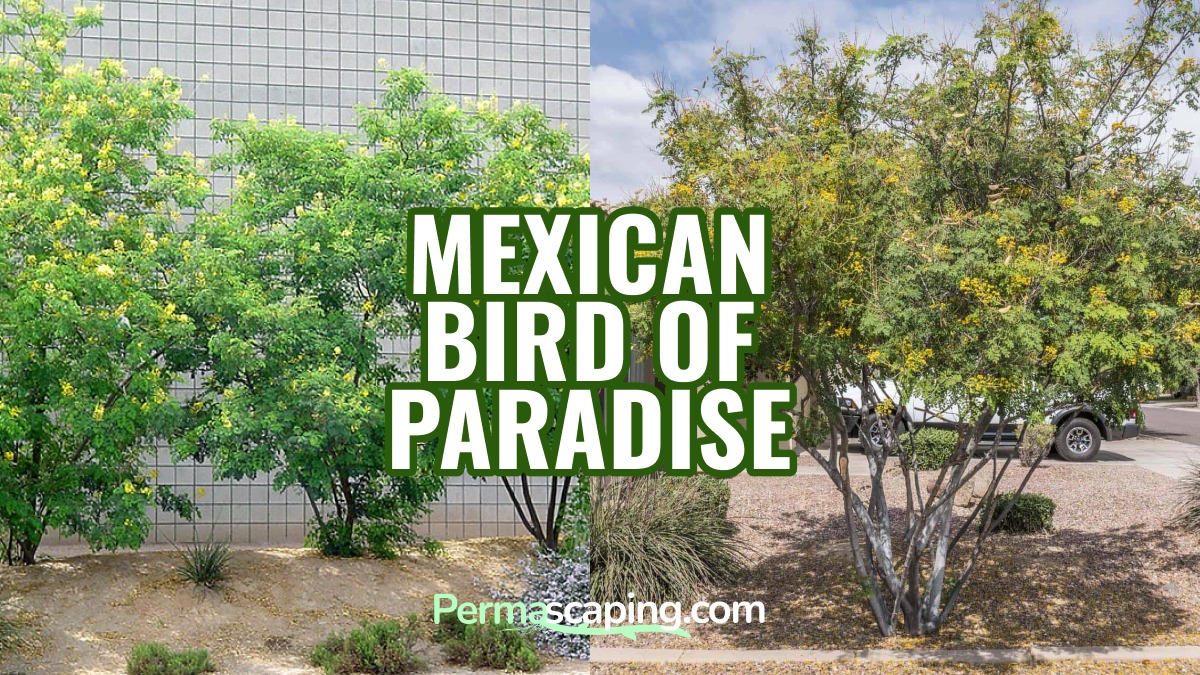Mexican Bird of Paradise (Caesalpinia mexicana)
The elegant and versatile Mexican Bird of Paradise is prunable into a small tree or dense hedge. Native, useful, and showy, it’s a true Permascaping ally for the lower canopy/understory layer of our desert landscapes.
Mature Canopy Size
10–15 ft wide, 12–18 ft tall (larger with deep watering and pruning into tree form)
Growth Rate
Fast — grows 2–4 ft per year with irrigation
Water Requirements (Minimum vs. Maximum Growth)
Minimum: Low — drought-tolerant once established
For Fast Growth: Weekly watering in hot months encourages dense foliage and flowering
Ecological & Functional Benefits
Native nitrogen-fixer — improves soil and supports companion plants
Attracts hummingbirds, bees, and butterflies with long bloom season
Excellent as privacy screen, ornamental hedge, or small patio tree
Edible / Harvest Season / Nutritional Benefits
No — not considered edible for humans; seed pods are ornamental
Minimum Chill Hours
None — ideal for frost-free to mild-winter desert zones
Maintenance Requirements
Low to moderate — prune annually to shape as a tree or maintain as compact hedge
Occasional clean-up of fallen flowers or pods
Thorny or Not?
No thorns
Deciduous or Not?
Semi-deciduous — may lose leaves in colder winters or extreme drought
Root System
Non-invasive, fibrous root system
Safe for use near walkways, patios, walls, and fences
Low risk for pools or septic
Performs well in containers or tight planting zones
Miscellaneous Notes
Bright yellow flowers bloom from spring to fall, especially with regular water
Can be pruned as a multi-trunk ornamental tree or clipped as formal hedge
More cold-hardy and restrained than Red Bird of Paradise (Caesalpinia pulcherrima)
Native to northern Mexico and extreme southern Arizona
Questions about the Mexican Bird of Paradise?
Comment below or on our social media pages @permascaping.

